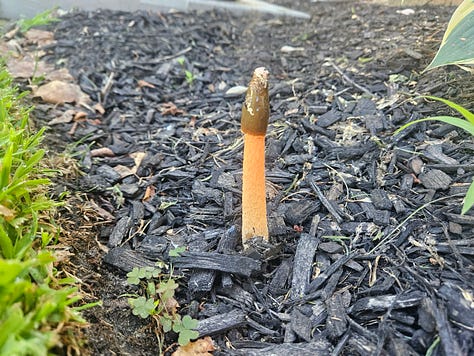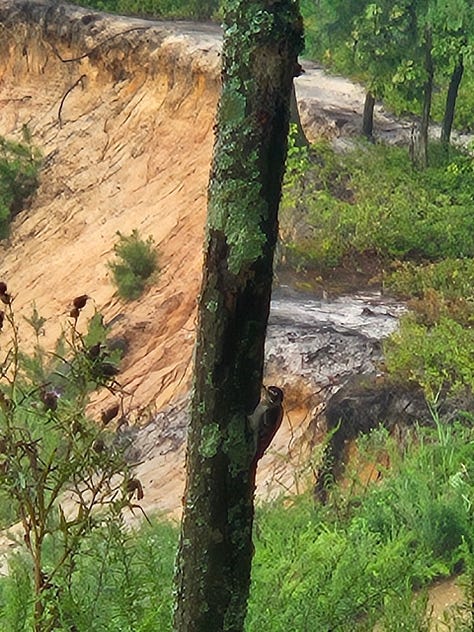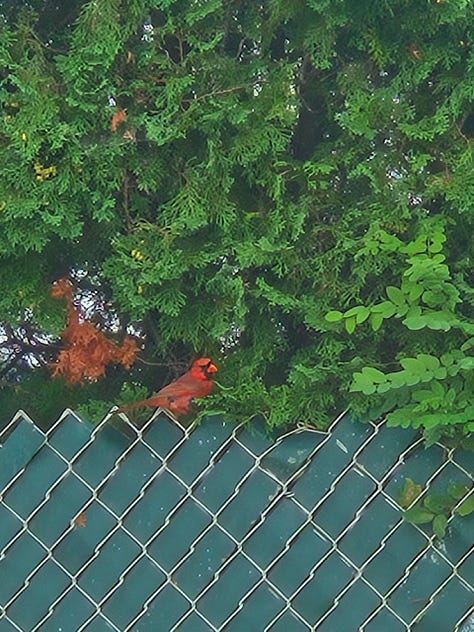"[c]aring for myself is not self indulgence, it is self preservation, and that is an act of political warfare."—Audre Lorde
“To stand apart is to look at the world (now) from the point of view of the world as it could be (the future), with all of the hope and sorrowful contemplation that this entails.”—Jenny Odell, How to Do Nothing: Resisting the Attention Economy
“If I had no choice about the age in which I was to live, I nevertheless have a choice about the attitude I take and about the way and the extent of my participation in its living ongoing events. To choose the world is…an acceptance of a task and a vocation in the world, in history and in time. In my time, which is the present.”—Thomas Merton
I’ve been reading a lot lately. (Birds, books, and biking.) These quotes stuck out to me, all from the Odell book. Something about the book as a whole left me wanting, but the first chapter—which is based on a keynote speech that Odell gave, a transcript of which you can read here—is the most thought-provoking. The rest of the book is also good, but felt like she’d needed to find how to fill a book after the keynote got her proposal accepted.
She brings in Thoreau, Robin Wall Kimmerer, and Thomas Merton to assist, and uses a lot of examples of performance art that is meant to shake us, break our attention, so we can see more clearly. She focuses also on how bioregionalism—the awareness of one’s local biome, something many of us rediscovered during the isolation of the pandemic—can be used to break the grip of “the attention economy,” and free ourselves to do nothing, and not be a product for a tech conglomerate all of our lives.
I can’t recall if she mentions Annie Dillard’s Pilgrim at Tinker Creek, which now that I think of it, is really about using bioregionalism to create one’s one monastic hermitage in local nature. I’m not sure how developed the area around Tinker Creek was when Dillard wrote her book, but now it’s a suburb. She mentions dirt bikers and dairy cattle; it seems it was more rural then, but like Walden Pond, it was not terribly remote. What mattered was that she focused on what was around her, such as the infamous Giant Water Bug that liquefied a frog’s innards and sipped them out, and the horsehair worm slithering across a puddle.
Lately, I’ve had a hard time pulling myself away from scrolling Reddit. I enjoyed the Olympics this year, and I watched a lot of the speeches at the Democratic National Convention, and I’m waiting for the Paralympics to begin on August 28th. Bioregionalism has been helping me. This stinkhorn arose in the mulch in our backyard; the Northern Cardinal and its mate are frequent visitors. We also have a Ruby-Throated Hummingbird who visits my feeder, but has so far evaded being photographed; I’ve heard a Northern Flicker and a Red-Bellied Woodpecker arguing over territory, as well. The Downy Woodpecker below was spotted at Blueberry Hill, a hiking area that overlooks a sand quarry, where I’ve seen Blue Grosbeaks and Orchard Orioles, as well.



While Blueberry Hill is a better place to spot songbirds, Timber Creek has become my Tinker Creek. From afar, I’ve spotted Buffleheads, Yellowlegs, Belted Kingfishers, and the other morning, I spooked a Great Blue Heron with a particularly loud fart. I wonder if Annie Dillard could say the same? This same heron—upon spotting me from its perch on a dead tree in the creek—once jettisoned a voluminous shit before flying away, to avoid my gaze. One good turn deserves another.
Another excellent read was Becoming Little Shell: A Landless Indian’s Journey Home, by our very own
. A powerful read of discovery and history, both personal and national, and how it echoes to the present day. If you aren’t a reader of his newsletter already, this is a good start, and includes a short excerpt of the book.Chris and I are close in age, and I also grew up in the era of Evel Knievel, KISS, Dungeons & Dragons, and Star Wars. If you like D&D and KISS, you should watch Role Models with Paul Rudd, Seann William Scott, Jane Lynch, Elizabeth Banks, Ken Jeong, Christopher Mintz-Plasse, and Bobb’e Thompson. It starts as a typical raunchy buddy comedy and takes a hard turn into LARPing and Scott explaining “Love Gun” by KISS like he’s delivering a doctoral dissertation. It is gloriously stupid, but at heart is a wholesome film about loving friends by caring about their weird hobbies. And you get to see Paul Rudd cosplay as Paul Stanley while battling fantasy LARPers.
I’ve read a dozen books by Maurice Sendak, and a few by “paleontologist with the soul of a poet” Loren Eiseley, and I will write about both of them in detail, soon.
, writer of Field Notes, has a book coming out called A Natural History of Empty Lots which focuses on wildlife in urban areas, which looks like it will be a modern, urbanized take on Dillard’s pilgrimage. I look forward to reading it.I’ve mentioned Antonia Malchik’s A Walking Life before; I’m looking forward to her next book, No Trespassing, most of all. She talks of her favorite “bioregion” here:
I took a short video of the Downy Woodpeckers the other day at Blueberry Hill. I love these fierce little birds.







I am going to try to think of heron farts to get that song out of my head!
Haven’t thought of Tinker Creek in a long time but when I do, it’s always of that bug scene. Interesting thinking about bioregionalism (or maybe just “living where we are”) in Chris’s book, too, since the place relationship covers such a vast area. I think a lot about an interview I heard once where the person talked about trying to think of ourselves as citizens of a watershed, which feels applicable. Extensive while also being hyper-local.
Thank you for writing & sharing--the reading recommendations, the woodpeckers, the heron fart, the ideas. Noting we became aware of our local biomes during the pandemic is apt. It became a theme in my reading material.